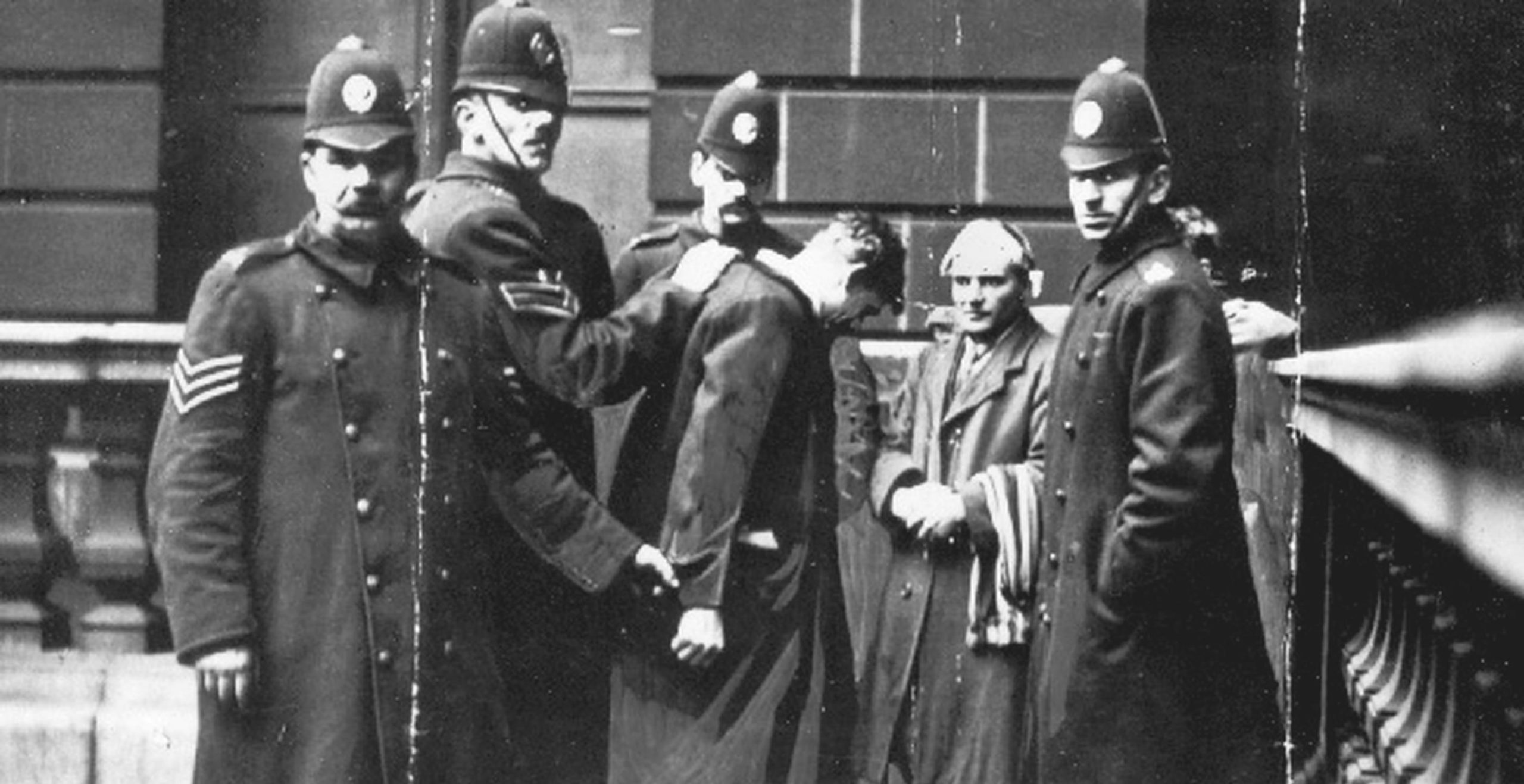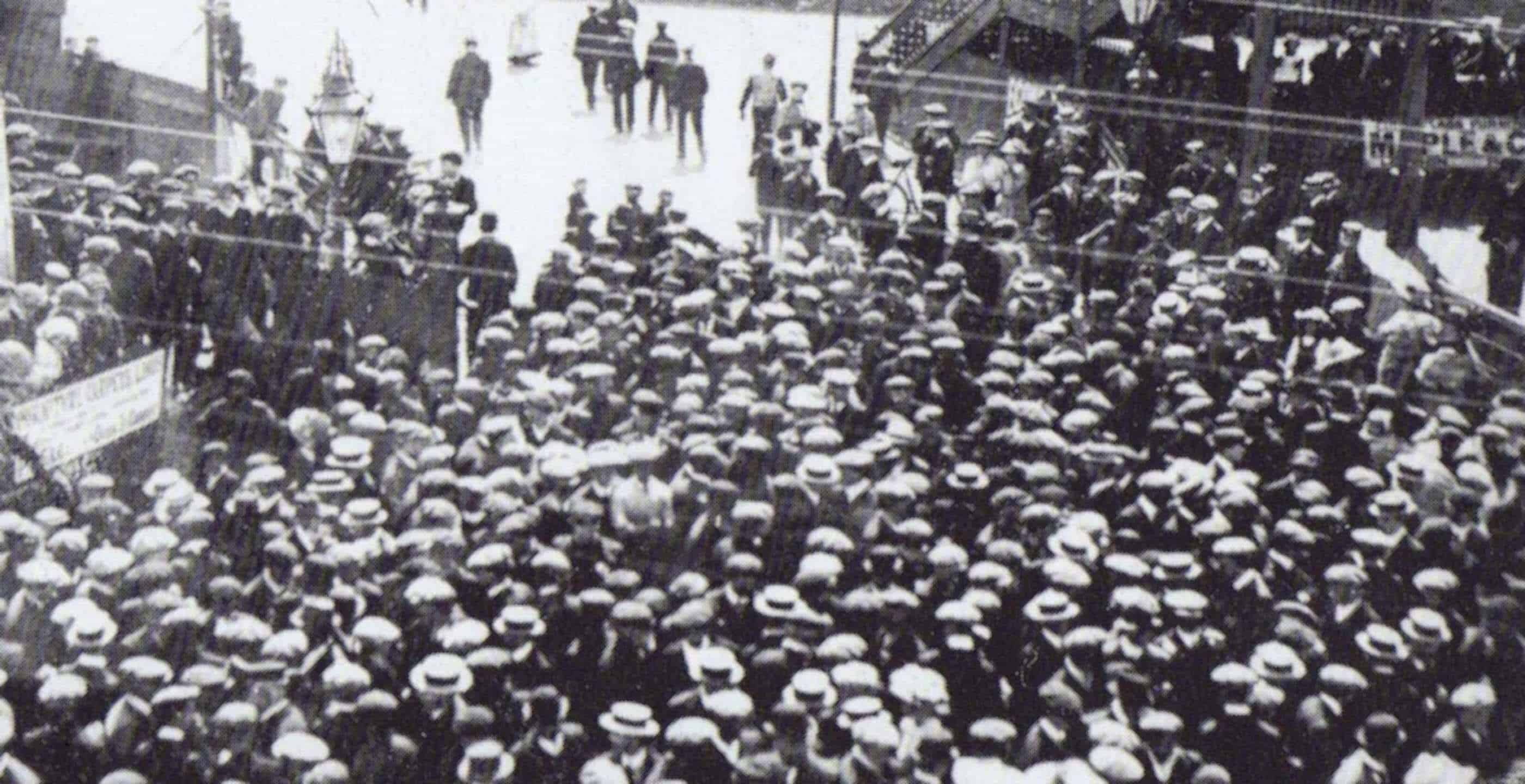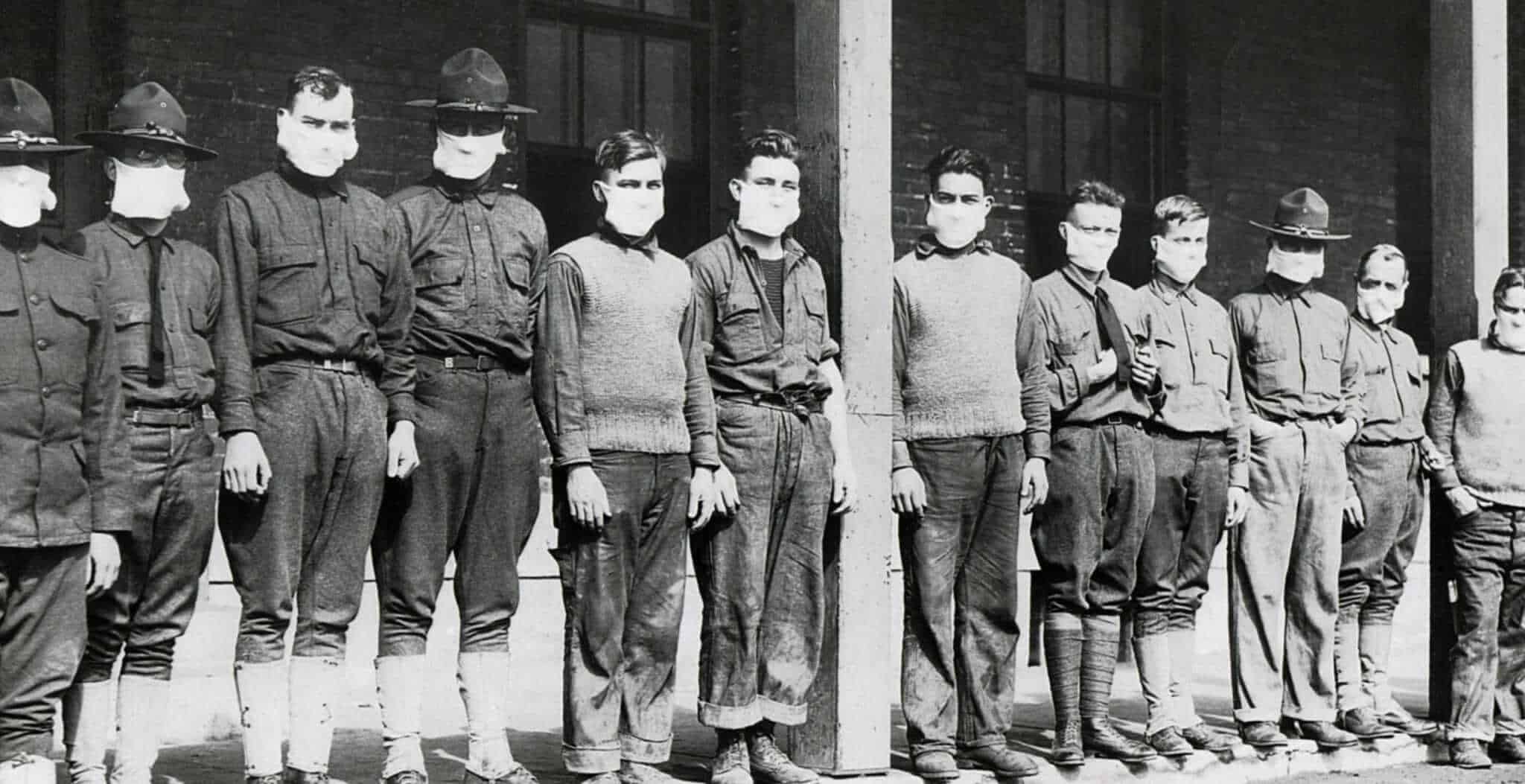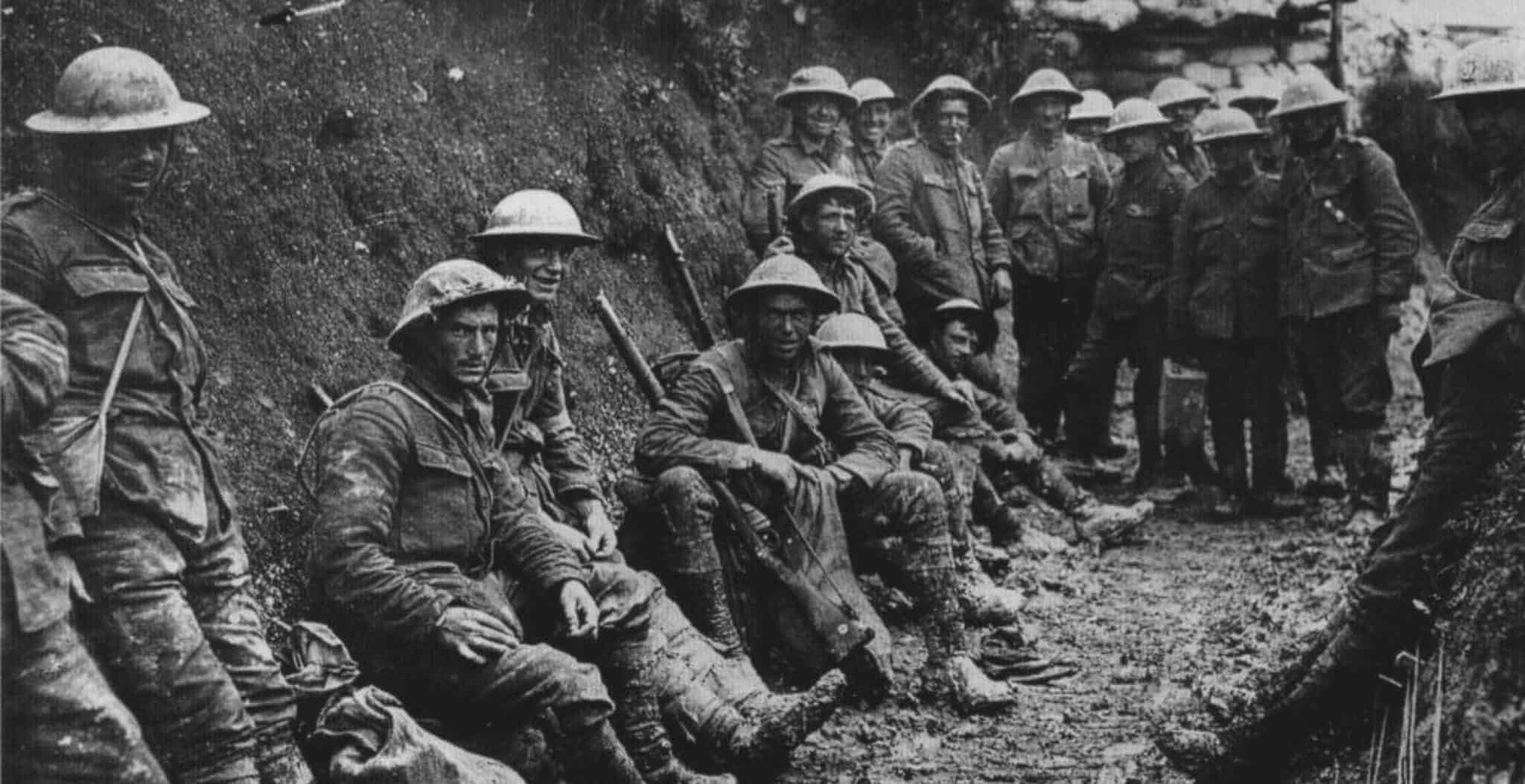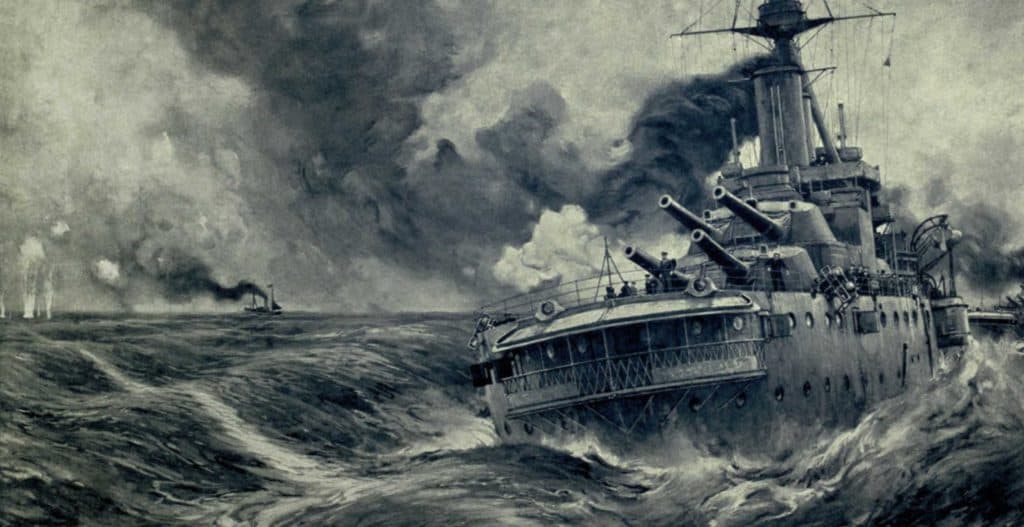The year was 1919 and conflict in Europe had only just come to an end after a bitterly fought war lasting four years finally reached its conclusion. Whilst victory was declared, the atmosphere was febrile as for many this was a Pyrrhic victory. Social unease prevailed and the government appeared inadequate at dealing with the needs of the public.
Far away in Russia, the Bolshevik Revolution had gripped a colossal imperial nation and dragged it to its knees with the people on the street calling the shots. The fall of the Tsar and the rise of communism instilled panic and fear in Western European leaders.
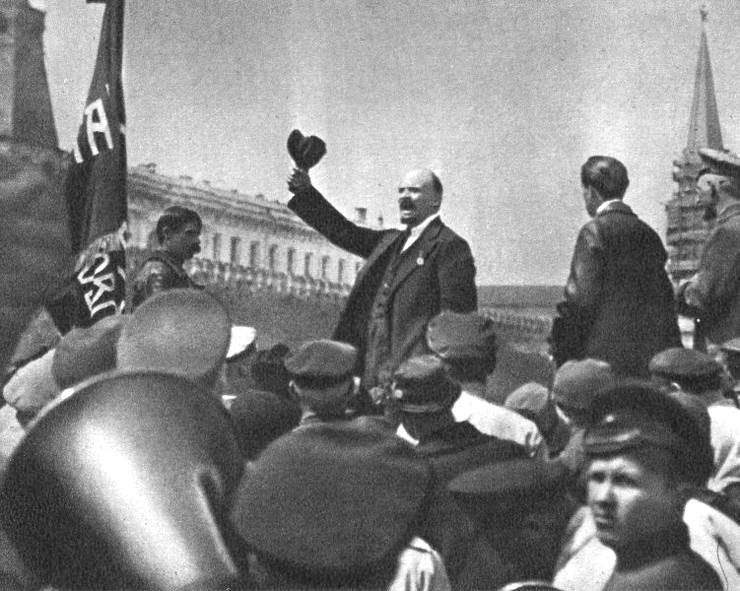
A major contributing factor to this social dissent in Britain came from the returning soldiers who put their lives on the line only to return to a country that was plagued by social problems. For those lucky enough to find work, the conditions were poor, rights non-existent and pay still a pittance.
All across Europe, dissent was stirring; the public were unhappy and politicians appeared either unwilling or too ineffective to do anything about it.
Moreover, these dissenting voices took on many forms; they found their voices in organised strikes whilst others took to the street in displays of civil disobedience. Even the police were striking, not to mention the army who had 1,000 soldiers march on Downing Street before being suppressed by Grenadier Guards loyal to the government.
With mutinies, violent police clashes and union organisation all at play, another factor emerged as a tipping point; the issue of race.
For many competing to get back into the job market after four years away fighting, the fierce competition did little to quell instances of racism which emerged from those who felt that they were more entitled to receive the job than another, based purely on their colour.
Despite the British Army being comprised of serving soldiers from different countries of Empire and many of those from different ethnic backgrounds having lived side by side with their white comrades without issue, the year 1919 became a watershed moment of social distress that ended with a blame game.
Particularly affected at this time were the port cities where returning dock workers rapidly increased the local population. Major cities such as Liverpool and Cardiff recorded massive civil unrest leading to deaths and a large number of arrests.
One of the principle targets in these civil disturbances were those from ethnic backgrounds, as Liverpool had around 5,000 black members of the community predominantly from the West Indies but also western Africa. For many in this febrile post-war atmosphere, a foreigner was an easy person to blame when they could not find work or housing and they saw an increase in minority ethnic groups in their local area.
So bad was the rioting in Liverpool that gunboats were sent down the Mersey to suppress the violence.
Such scenes were replicated elsewhere, particularly in Wales where dock areas became the epicentre of attacks and rioting.
Over the last century, around the port of Cardiff there had been a significant increase in people from black and Asian backgrounds. It had been known for companies to undercut local men’s wages and employ foreign workers for less. Such practices had already led to reprisals; as a result of the Cardiff Seaman’s Strike of 1911 which focused its attention on Chinese sailors, local Chinese businesses had been smashed up.
The growing antipathy of white workers towards their counterparts from other backgrounds took many forms, particularly when they married local girls.
On 6th June 1919, the Newport riots began when a black man, who had allegedly said something to a white woman, was seized upon by a white soldier, subsequently igniting a wave of indiscriminate attacks on anyone deemed to be from another ethnic background. This led to homes being looted, businesses smashed and people attacked in the street.
Moreover, similar violence took place in Cardiff with rioting lasting three days and families hiding in their homes whilst businesses were targeted.
In Barry, a fatal stabbing took place whilst growing mobs on the street threatened a black shipwright and later pelted him in an unprovoked attack.
Such was the scale of the unrest that police were called in to form a barricade. Sadly however deaths did occur as well as a high number of injuries and in response, numerous arrests.
Of those who were arrested, a large proportion were from ethnic minority backgrounds and sentences were carried out, in some cases with little evidence provided.
Meanwhile, north of the border in Glasgow, the riots took on a rather different nature as the civil unrest was sparked by an outcry of industrial rebellion organised by the Scottish Trade Union Congress and the Clyde Workers’ Committee.
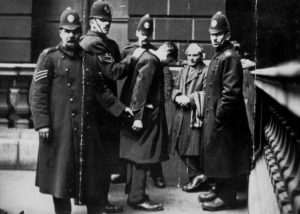
On Monday 27th January 1919, the unions had arranged for a meeting at St Andrew’s Hall to discuss the reduction of working hours and lack of jobs.
In no time at all, the meeting drew tremendously large crowds and sympathy for their cause increased exponentially in subsequent days as it spread to surrounding areas.
Such spontaneous solidarity for a common cause resulted in an emergency government meeting being called to discuss the strike in Glasgow, with many attending the meeting voicing their concerns at the pattern of industrial discontent mirroring uprisings taking place on the Continent.
Such worries inevitably led to a volatile reaction from the government, who felt their position of power was potentially incredibly fragile and fearing a “Bolshevik uprising” as described by Robert Munro, the Secretary of State for Scotland. The response was heavy and unrelenting and came in the form of the military.
On Friday 31st January 1919, a bloodbath erupted on the streets of Glasgow with police confronting crowds of unarmed men and women.
With the support of 10,000 troops and six tanks deployed across the city of Glasgow, the armed forces and the rioting public engaged in a pitched battle which ended in a brutal and bloody confrontation.
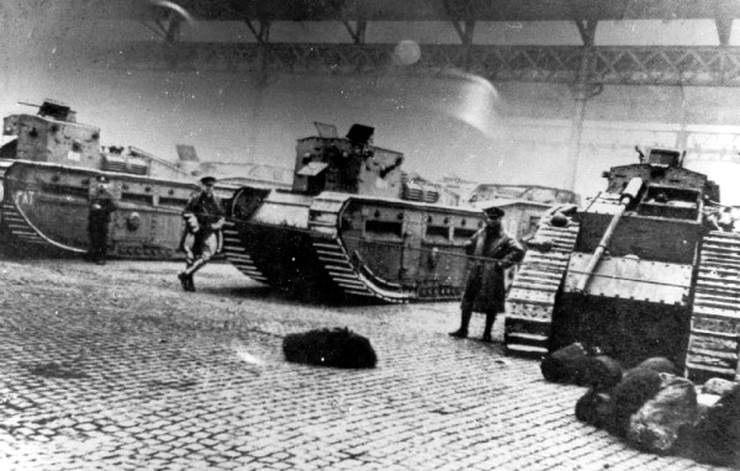
Such was the extent that even when the rioting was suppressed, soldiers and tanks could still be seen on the streets for another month, demonstrating the genuine fear of David Lloyd George’s government and their desire to go to any length in order to avoid a revolution on home soil.
As such, the government would get their way, with riots quelled, armed forces eventually suppressing the mobs up and down the country and law and order, albeit gradually, being restored.
Whilst a full-scale revolution had been avoided, the eruption of violence in towns and cities up and down Britain represented a tangible social problem that the government had failed to address.
The suppression of public disobedience with force achieved results, however long-term the discontent would find its strongest expression on the ballot paper.
In the years leading up to 1919, the First World War had forced the country into difficult times of struggle both for those fighting in the trenches and back home. Longer hours, little pay, poor housing and a failing infrastructure all contributed to the general outcry of “enough is enough” for people across the British Isles.
Rioting, striking and rebellion ended up taking on many forms, in many cases in the ugliest possible way, with neighbours attacking neighbours, whites turning on blacks and other ethnic minorities, for no other reason then they were angry with their lot and wanted someone to blame.
For many people, 1919 was a difficult year of persecution, struggle and failure. The failure however was not their own. It was a failure of the state; the government had demanded so much from its people at a critical time, demands which had been met and exceeded during the First World War, ending in military victory.
This victory could not however be seen on the streets. The First World War was over but the social war was just beginning…
Jessica Brain is a freelance writer specialising in history. Based in Kent and a lover of all things historical.
Published 16th January 2023
